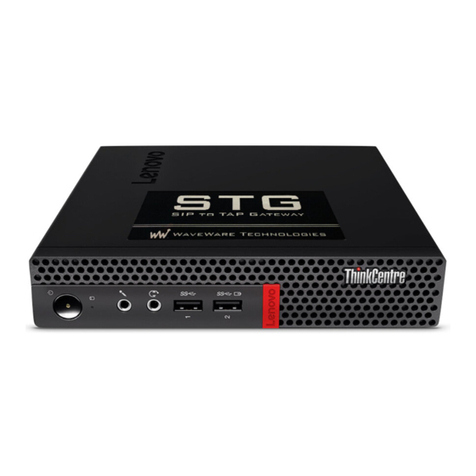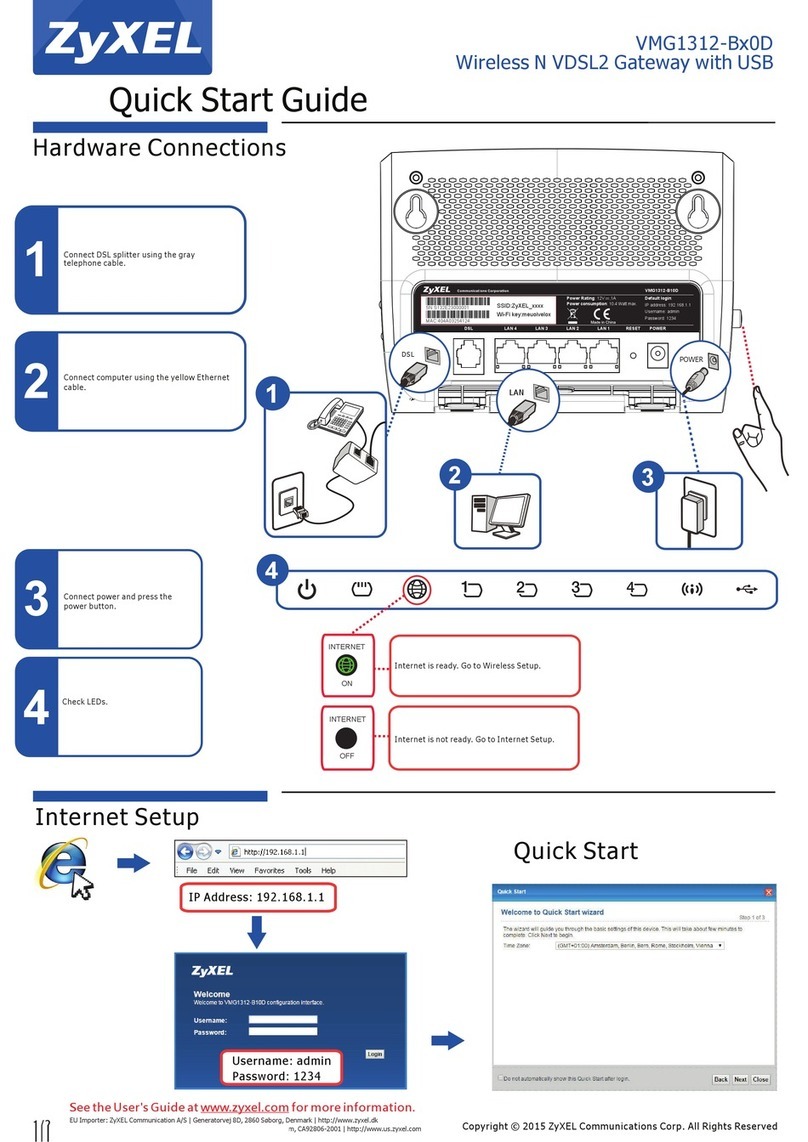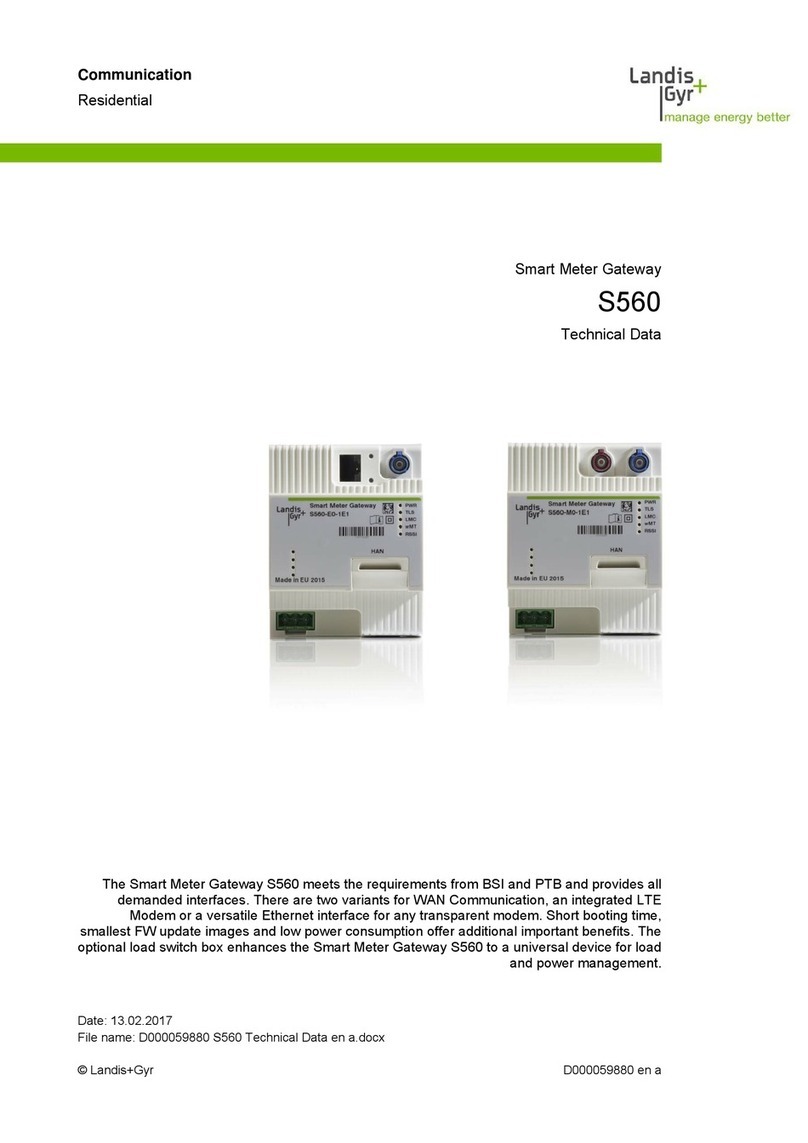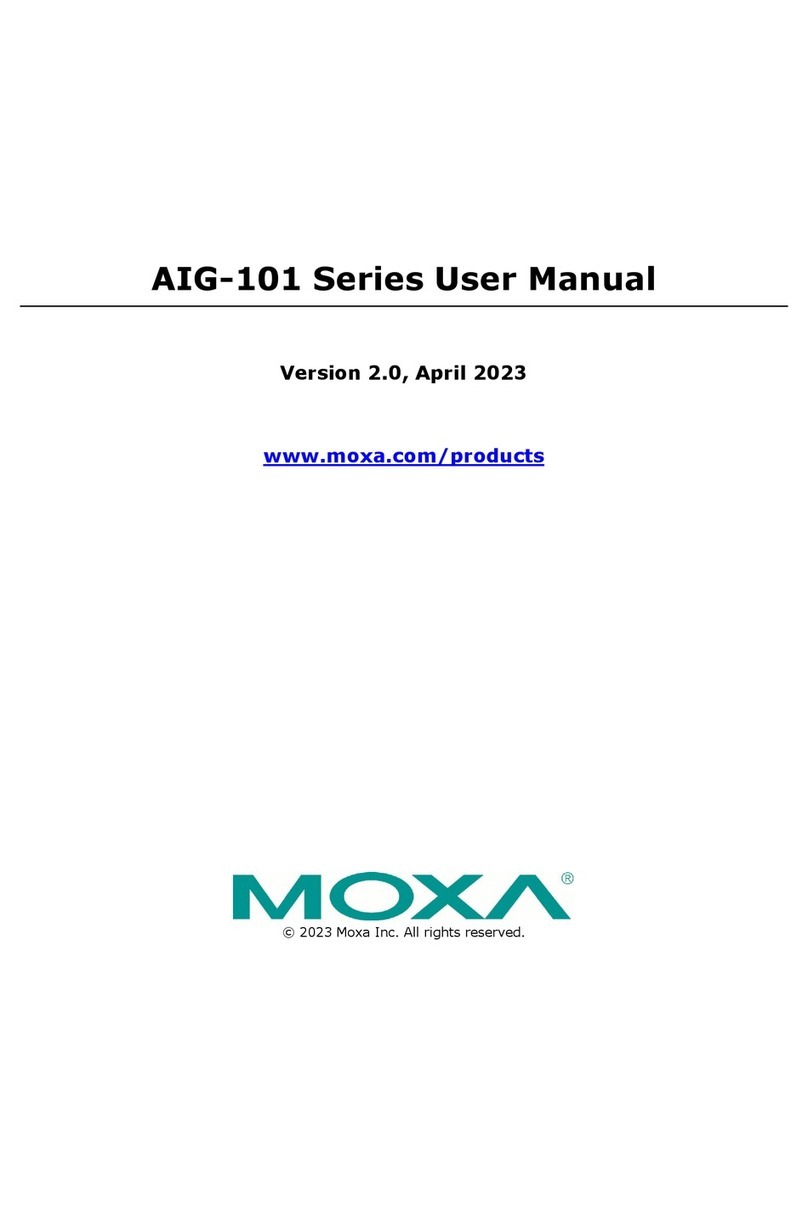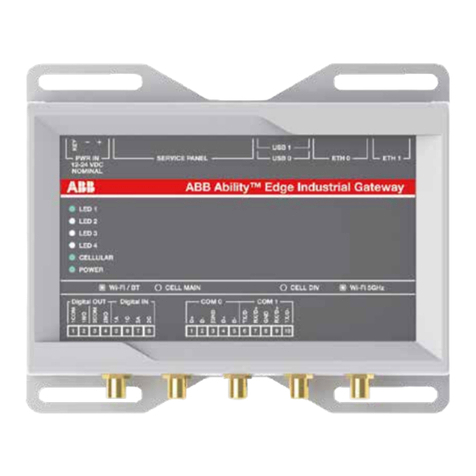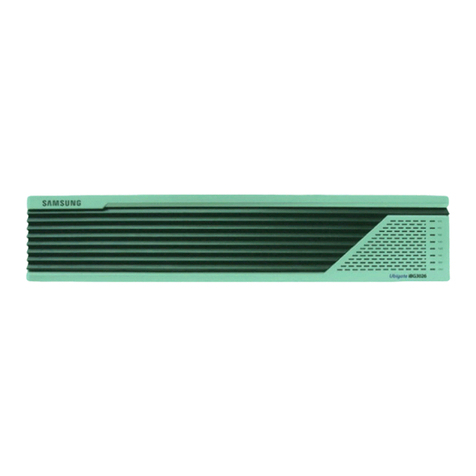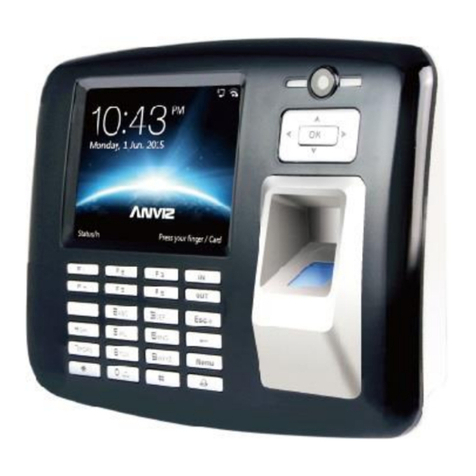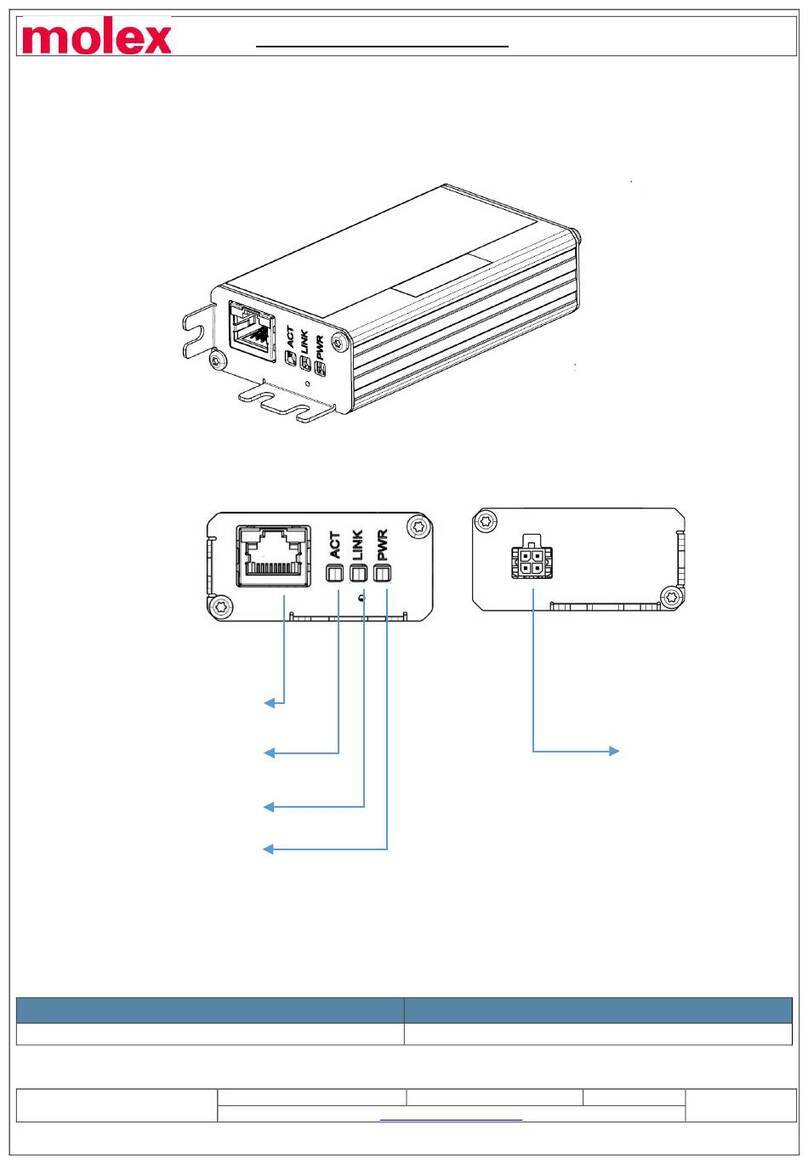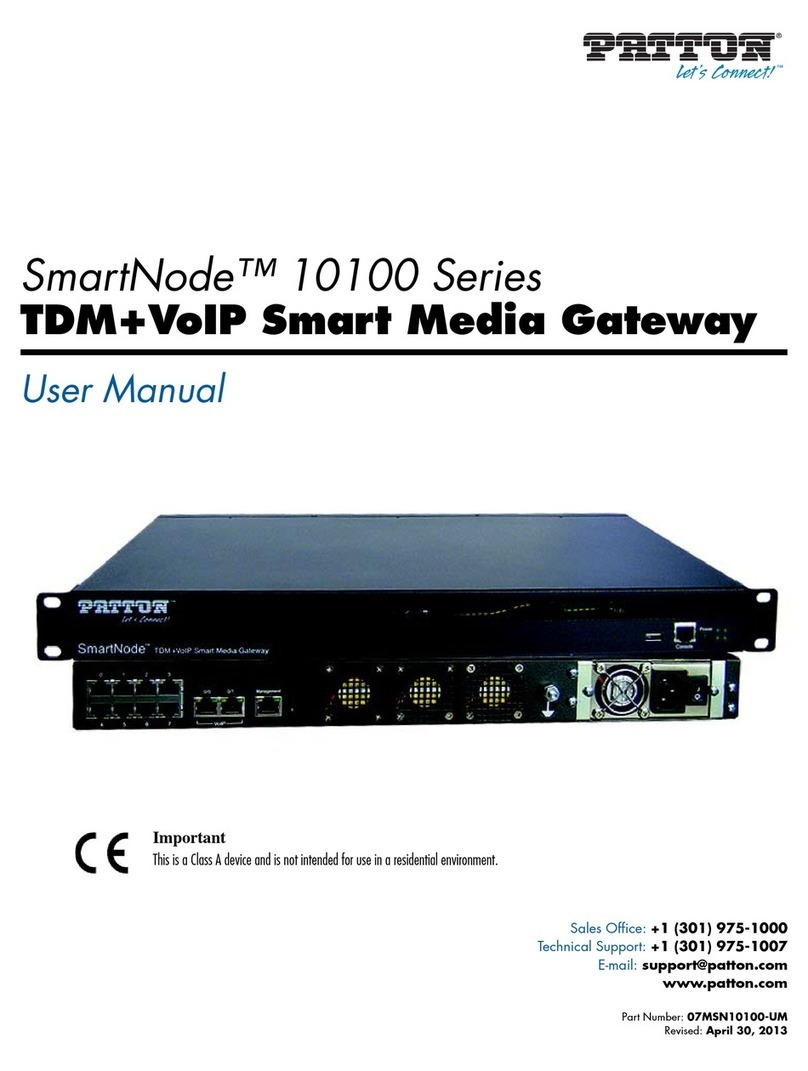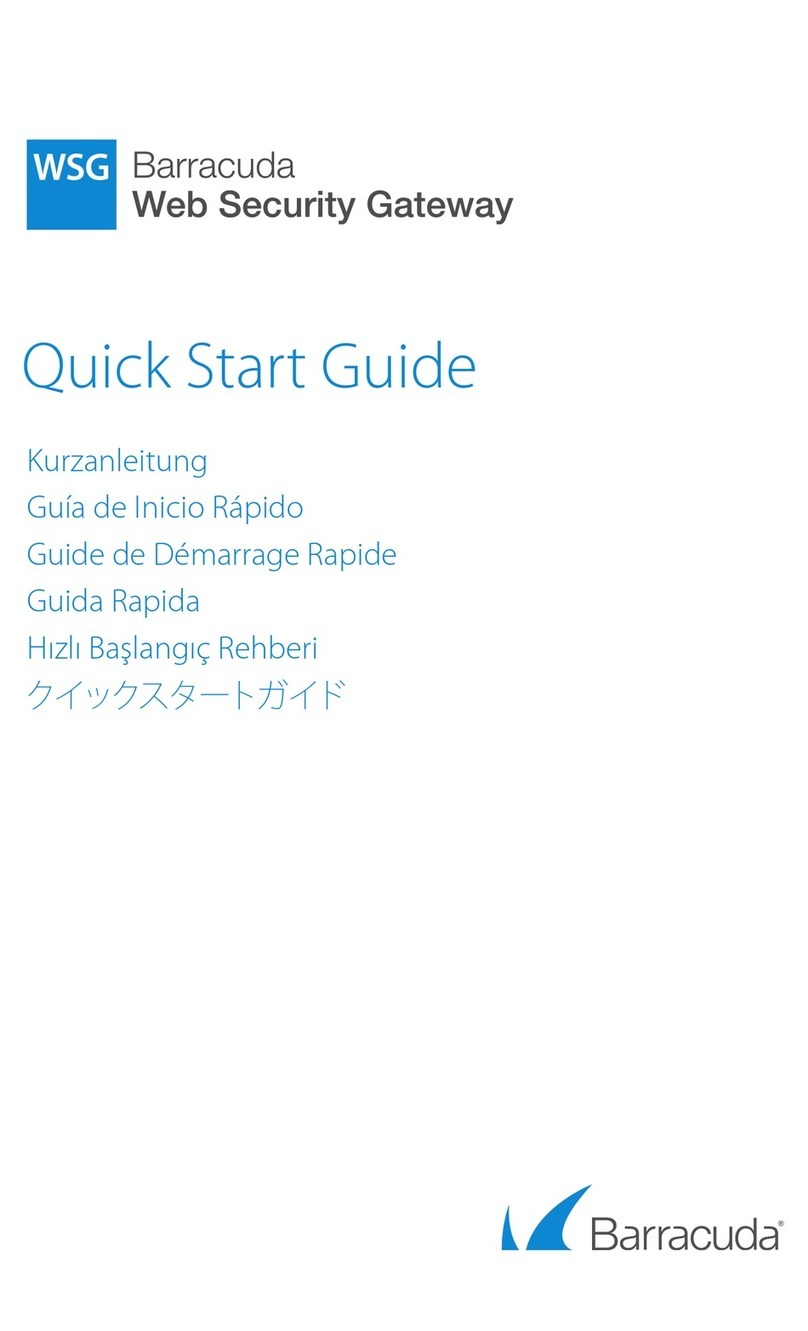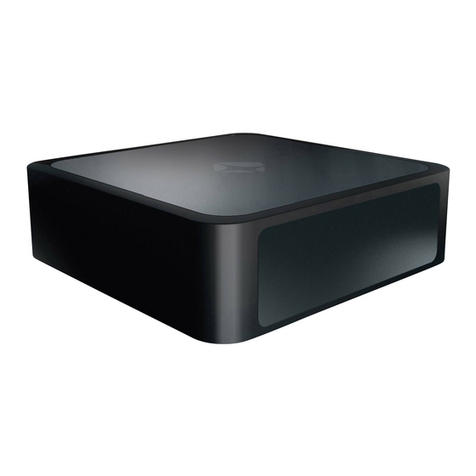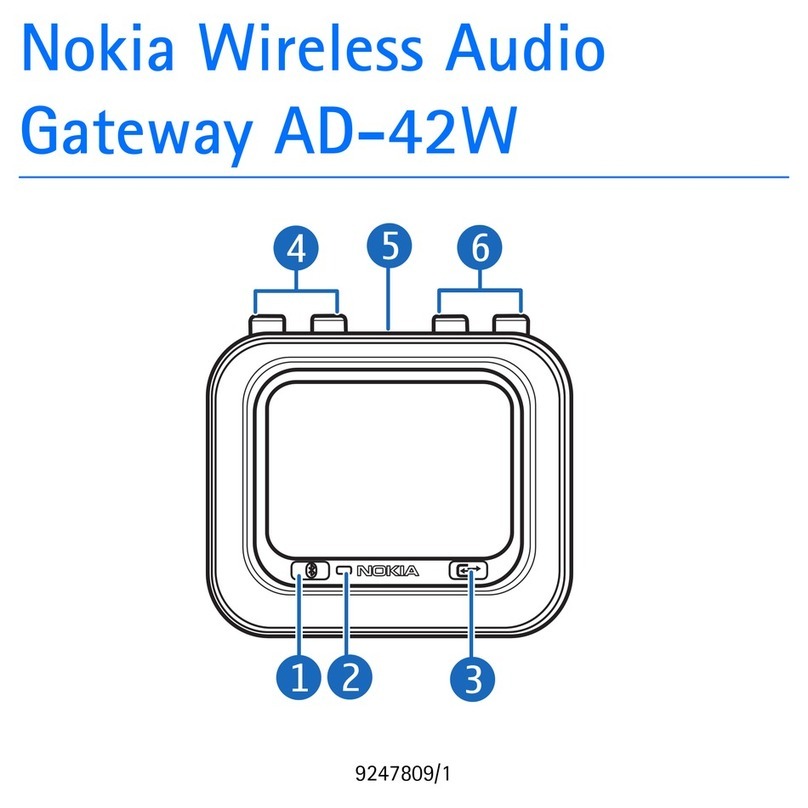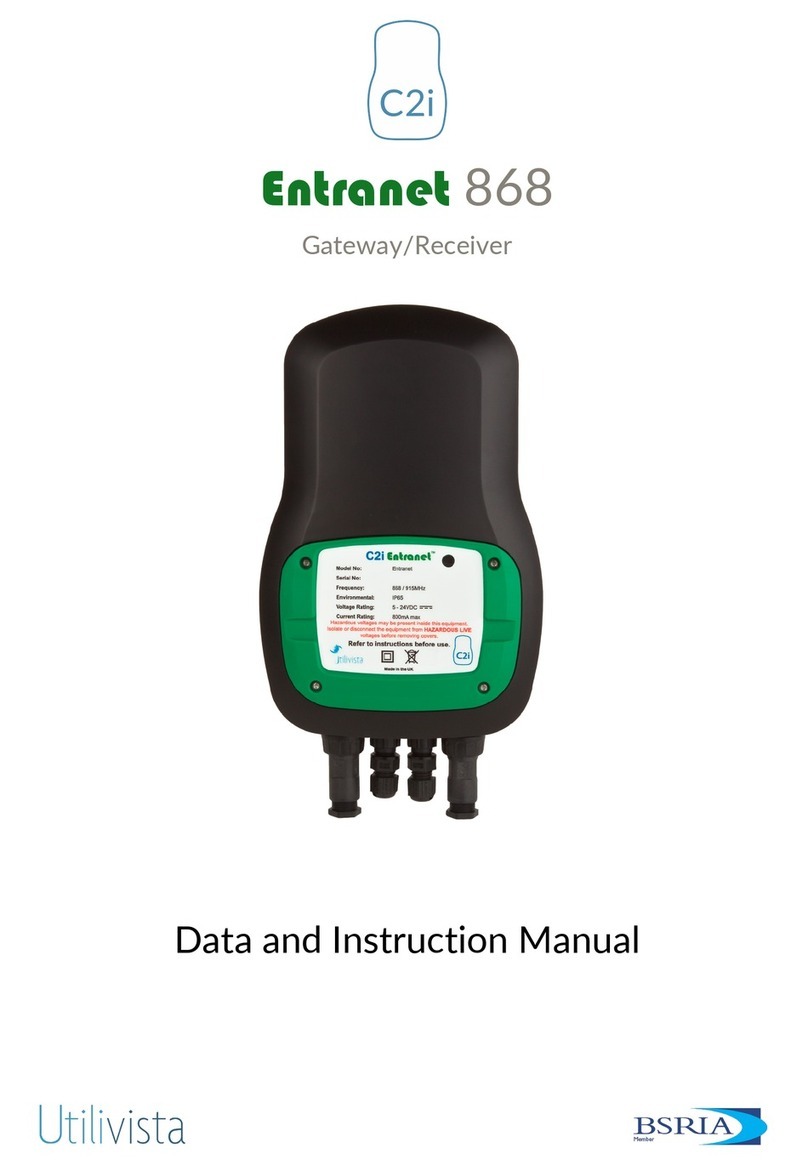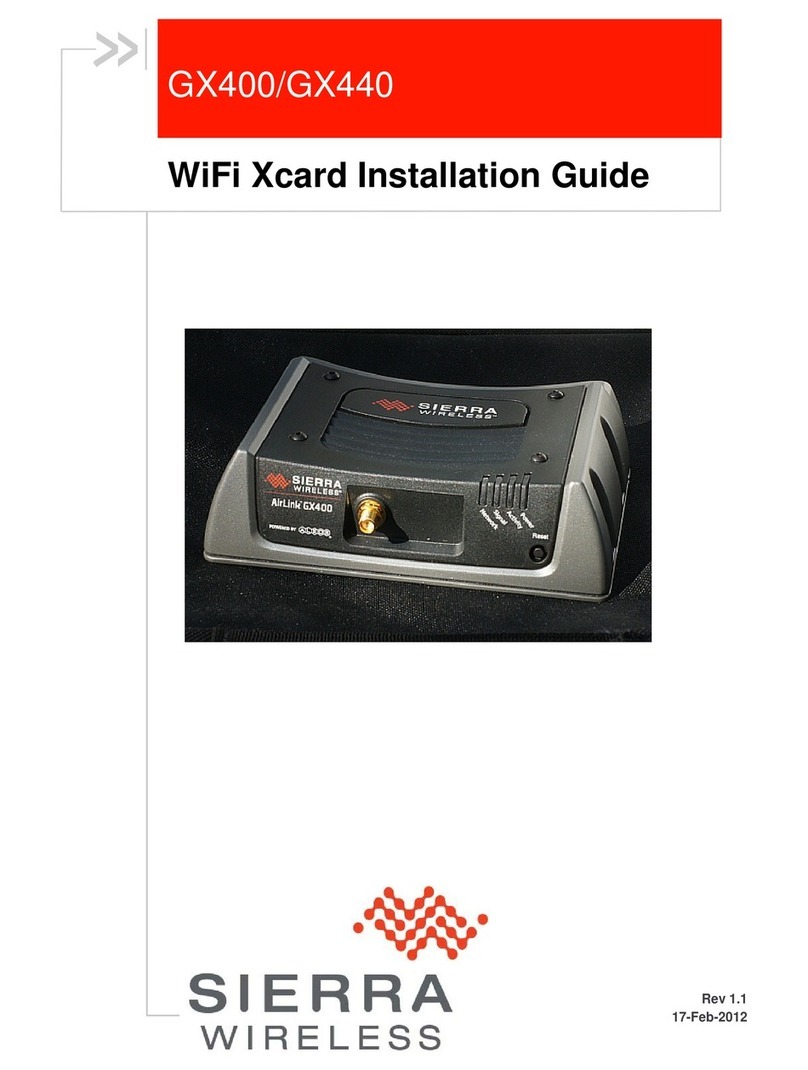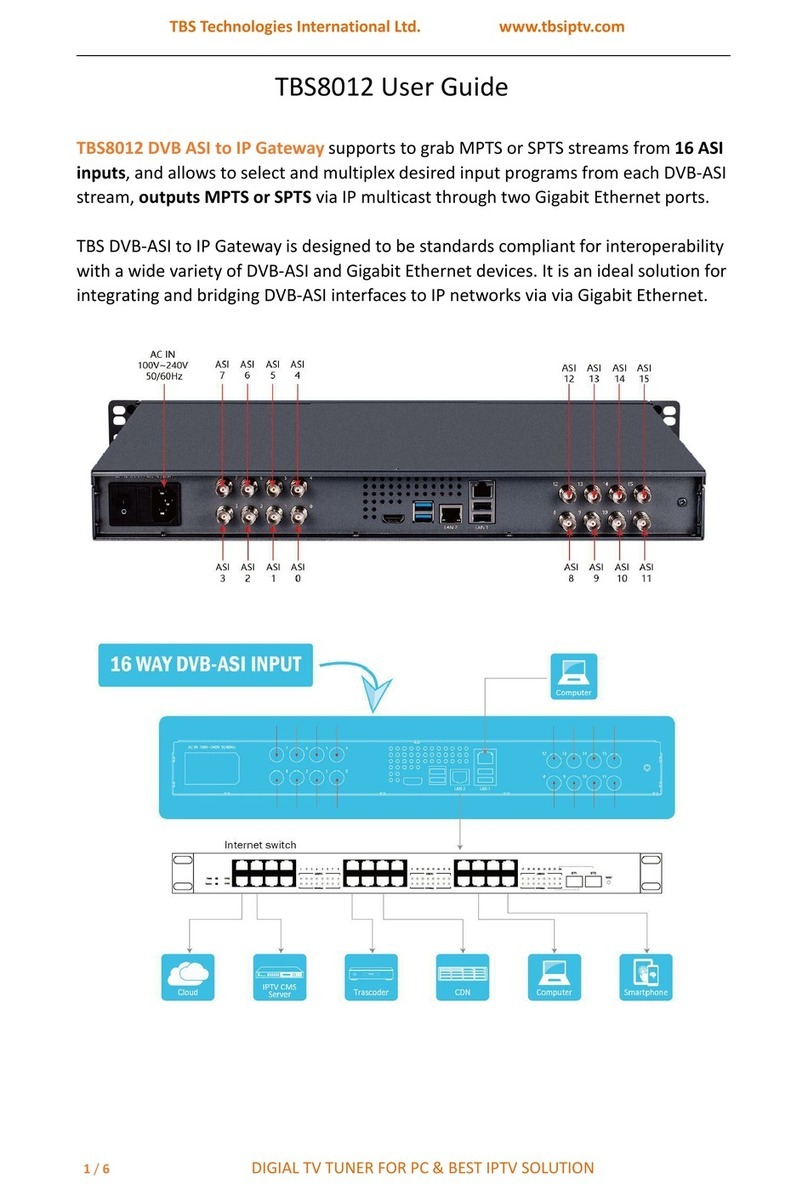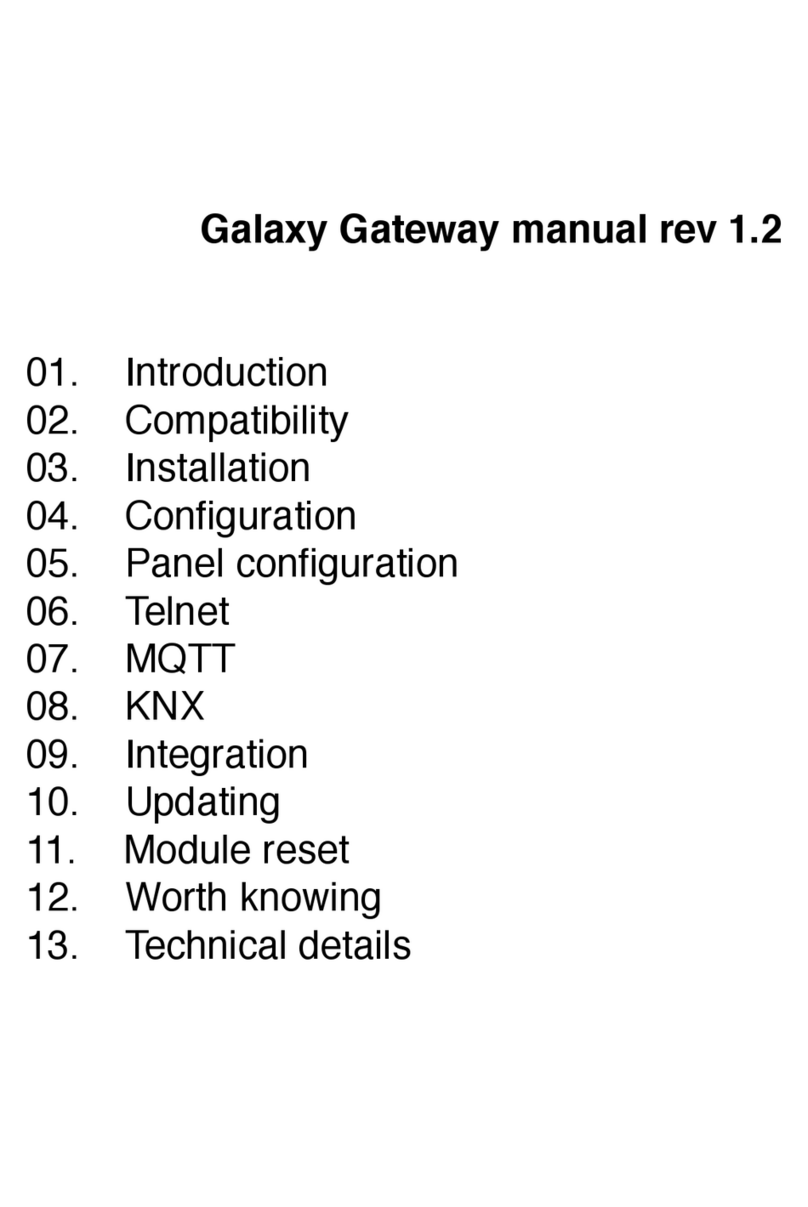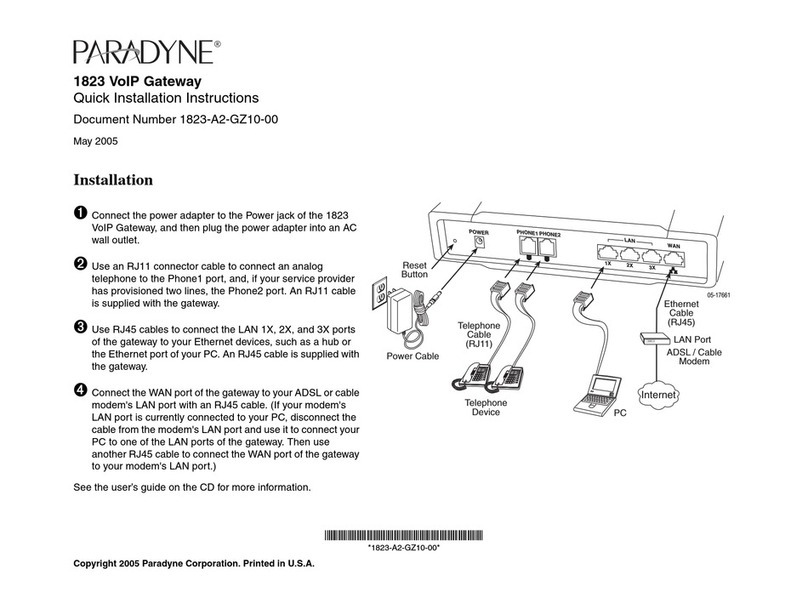Shenzhen Seener Wireless Technology SW8021 User manual

LoRaWAN Gateway Module Datasheet
Version:V1.0.0 Data:2021-10-15
Gateway module series
SW8021 LoRaWAN Gateway Module Datasheet

SW8021 LoRaWAN Gateway Module Datasheet V1.0.0
Shenzhen Seener Wireless Technology Co., Ltd
Document Information
Version
Time
Description
Remark
V1.0.0 2021-10-15 Preliminary version Ming

SW8021 LoRaWAN Gateway Module Datasheet V1.0.0
Shenzhen Seener Wireless Technology Co., Ltd
Copyright Notice
All contents in the files are protected by copyright law, and all copyrights are reserved by Shenzhen Seener
Wireless Technology Co., Ltd. Without written permission, all commercial use of the files from Seener are
forbidden, such as copy, distribute, reproduce the files, etc., but non-commercial purpose, downloaded or
printed by individual are welcome.
Disclaimer
Shenzhen Seener Wireless Technology Co., Ltd reserves the right to change, modify or improve the document
and product described herein . Its contents are subject to change without notice. These instructions are intended
for you use at your own risk .

SW8021 LoRaWAN Gateway Module Datasheet V1.0.0
Shenzhen Seener Wireless Technology Co., Ltd
Table of Contents
1. Description.................................................................................................................................................................- 1 -
1.1 Overview .........................................................................................................................................................- 1 -
1.2 Product features ..............................................................................................................................................- 1 -
2. Specifications.............................................................................................................................................................- 1 -
2.1 General specifications .....................................................................................................................................- 1 -
2.2 Electric specifications ......................................................................................................................................- 2 -
2.3 Absolute maximum rating...............................................................................................................................- 2 -
2.4 Operating conditions.......................................................................................................................................- 3 -
2.5 Operating conditions.......................................................................................................................................- 3 -
2.6 RF Characteristics ............................................................................................................................................- 3 -
2.7 Electrical Requirements ..................................................................................................................................- 4 -
3. Typical Hardware Connections..................................................................................................................................- 4 -
3.1 Physical dimensions ........................................................................................................................................- 4 -
3.2 Interfaces .........................................................................................................................................................- 4 -
3.2.1 SPI Interface..........................................................................................................................................- 4 -
3.2.2 Power pins ............................................................................................................................................- 5 -
3.2.3 RF connection .......................................................................................................................................- 5 -
3.2.4 RESET pin ..............................................................................................................................................- 5 -
4. Reliability Test and Approves....................................................................................................................................- 5 -
5. Package ......................................................................................................................................................................- 7 -
6. Contact Us..................................................................................................................................................................- 7 -

SW8021 LoRaWAN Gateway Module Datasheet V1.0.0
Shenzhen Seener Wireless Technology Co., Ltd
- 1 -
1. Description
1.1 Overview
SW8021 is a LoRa gateway module with industrial standard mini PCI express form factor based on SX1302 chipset.
This mPCIe module can be used in any embedded platform offering a free mPCIe slot with SPI connectivity and
capable of providing enough power for the module, enables low-power wide area communication capabilities to
your new gateway design or existing industrial routers/computer.
SW8021 is a complete and cost efficient LoRa gateway solution offering up to eight(8) programmable parallel
demodulation paths, an 8 x 8 channel LoRa packet detectors, 8 x SF5-SF12 LoRa demodulators and 8 x SF5-SF10
LoRa demodulators. It is capable of detecting uninterrupted combination of packets at 8 different spreading
factors and 8 channels with continuous demodulation of up to 16 packets. It targets Internet-of-Things (IoT)
applications, covering up to 500 nodes per square kilometer in an environment with moderate interference.
Table 1.1 Product model list
1.2 Product features
Multichannel: eight(8) programmable parallel demodulation paths.
SPI Interface: The SPI interface gives access to the configuration register of SX1302 via a synchronous
full-duplex protocol.
Compact min-PCI express form factor T Y P. 50.95*30*10.5mm (W*L*H)
Environmentally friendly RoHS compliant
Voltage of mini PCI-e is 3.3V
Tx power up to 15.90dBm, Rx sensitivity down to -120dBm@SF11, BW500kHz
2. Specifications
2.1 General specifications
Parameters Description
Modulation type ISM Band LoRa®
LoRa chipset SX1302
Multi-channel Eight (8) uplink, one (1) down link
Package Mini PCI express
Host interface SPI
NO. Model Description Remark
1 SW8021-U 923.3~927.5 MHz, is mainly designed for operation in America south-east
Asia.

SW8021 LoRaWAN Gateway Module Datasheet V1.0.0
Shenzhen Seener Wireless Technology Co., Ltd
- 2 -
923.3~927.5
Frequency MHz
Receiving sensitivity -120dBm@SF11, BW500kHz
Tx power +15.90dBm
Supply voltage +3.3V
Power consumption Tx (Max)<415mA,Rx <40mA, standby 7.5mA
Operating temperature -40~+85℃(industrial grade)
Operating humidity 10%~90%, no-condensing
Dimensions TYP. 50.95*30*10.5mm (W*L*H)
ESD (Human Body Model) JEDEC JS-001 Standard ±1kV, Class 2
Table2.1 General specification
2.2 Electric specifications
ESD Notice: SW8021 is a high-performance radio frequency device. It satisfies:
Class 2 of the JEDEC standard JESD22-A114 (Human Body Model) on all pins.
Class III of the JEDEC standard JESD22-C101 (Charged Device Model) on all pins
It should thus be handled with all the necessary ESD precautions to avoid any permanent damage.
The limiting values given are in accordance with the Absolute Maximum Rating System. Stress above
one or more of the limiting values may cause permanent damage to the device. These are stress ratings
only, and operation of the device at these or at any other conditions above those given in the
Characteristics sections of the specification is not implied. Exposure to these limits for extended periods
may affect device reliability.
2.3 Absolute maximum rating
Table2.3 absolute maximum rating
Stressing the device beyond the “Absolute Maximum Ratings”may cause permanent damage. The
product is not protected against over-voltage or reversed voltages. If necessary, voltage spikes
exceeding the power supply voltage specification, given in table above, must be limited to values within
the specified boundaries by using appropriate protection diodes.
Symbol Description Condition
Min
Max.
Unit
3.3Vaux Module supply voltage Input DC voltage at 3.3Vaux pins –0.3 3.6
V
RESET MPCI reset input Input DC voltage at RESET input pin –0.3 3.6
V
SPI SPI interface Input DC voltage at SPI interface pin –0.3 3.6
V
GPS_PPS GPS 1 pps input Input DC voltage at GPS_PPS input pin –0.3 3.6
V
I2C Temperature detection
Input DC voltage at I2C input pin –0.3 3.6
V
Rho_ANT Antenna ruggedness Output RF load mismatch ruggedness at
ANT1 10:1
VSWR
Tstg Storage Temperature –40 85 °C

SW8021 LoRaWAN Gateway Module Datasheet V1.0.0
Shenzhen Seener Wireless Technology Co., Ltd
- 3 -
2.4 Operating conditions
All specifications are at an ambient temperature of 25°C. Extreme operating temperatures can
significantly impact specification values. Applications operating near the temperature limits should be
tested to ensure the specification.
Table2.4 operating temperature range
Operating beyond the specified operating conditions can affect device reliability.
2.5 Operating conditions
2.5.1 Power Supply Range
The table below lists the power supply range. Input voltage at 3.3Vaux must be above the normal operating
range minimum limit to switch-on the module.
Table2.5.1 Operating power supply range
Operating beyond the specified operating conditions can affect device reliability.
2.5.2 Power Consumption
Mode Condition Min. Typical Max.
Active-Mode(TX) The power of TX channel is 15.90dBm and 3.3V supply. 500mA 520mA 550mA
Active-Mode(RX ) TX disabled and RX enabled. 70mA 85mA 105mA
Table2.5.2 Working current
2.6 RF Characteristics
The following table gives typically sensitivity level of the SW8021 .
Signal Bandwidth/[kHz] Spreading Factor Sensitivity/[dBm]
125 SF12 -139
125 SF10 -134
125 SF7 -125
125 SF5 -121
GFSK_50 50 kbps, GFSK modulation -111
250 SF9 -124
Parameter
Min.
Typ
Max.
Unit Remarks
Normal operating
temperature -40 +25 +85 °C Normal operating temperature range
Symbol Parameter Min. Typical
Max.
Unit
3.3V Module supply operating input voltage 3.00 3.30 3.60
V

SW8021 LoRaWAN Gateway Module Datasheet V1.0.0
Shenzhen Seener Wireless Technology Co., Ltd
- 4 -
500 SF11 -120
Table2.6 RF characteristics
2.7 Electrical Requirements
Stressing the device above one or more of the ratings listed in the Absolute Maximum Rating section may cause
permanent damage. These are stress ratings only. Operating the module at these or at any conditions other than
those specified in the Operating Conditions sections of the specification should be avoided. Exposure to Absolute
Maximum Rating conditions for extended periods may affect device reliability.
The operating condition range define those limit within which the functionality of the device is
guaranteed.Where application information is given, it is advisory only and does not form part of the
specification.
3. Typical Hardware Connections
3.1 Physical dimensions
Figure 3.1 dimensions
3.2 Interfaces
Reference circuit design shows the typical hardware connections for the module. Interfacing to the module
requires connecting to the signals provided on the SW8021 mPCIe connector as listed in pin description. Specific
interface connections are discussed in this cha pte r.
3.2.1 SPI Interface
SPI interface is provided on the Host_SCK, Host _MISO, Host _MOSI, Host _CSN pins of the system connector. The
SPI interface gives access to the configuration register of SX1302 via a synchronous full-duplex protocol. Only the
slave side is implemented.
Item Length Width Thickness Unit Remark
Dimensions 50.95 30 10.5 mm

SW8021 LoRaWAN Gateway Module Datasheet V1.0.0
Shenzhen Seener Wireless Technology Co., Ltd
- 5 -
3.2.2 Power pins
SW8021 series modules has multiple power and ground pins available on the mPCIe connector.
It is recommended that all power and ground pins be used when connecting to the module.
3.2.3 RF connection
The modules have one RF interfaces over standard UFL connector (Hirose U. FL-R- SMT) with the characteristic
impedance of 50Ω.
3.2.4 RESET pin
SW8021 series modules card includes the RESET active-high input signal to reset the radio operations as specified
by the SX1302 Specification.
3.2.5 GPS_PPS
SW8021 card includes the GPS_PPS input for received packets time-stamped.
3.2.6 I2C Interface
SW8021 integrates STTS series temperature sensor, which is connected by I2C interface. The PIN on the golden
finger provides I2C connection, allowing I2C to directly connect to the sensor, and obtain the temperature
information detected by the current module sensor
4. Reliability Test and Approves
Tests for product family qualifications are according to ISO 16750 "Road vehicles –Environmental conditions and
testing for electrical and electronic equipment”, and appropriate standards.
Products marked with this lead-free symbol on the product label comply with the "Directive
2 0 0 2/9 5/ E C and Directive 2 0 1 1/6 5/ E U of the European Parliament and the Council on the
Restriction of Use of certain Hazardous Substances in Electrical and Electronic Equipment" (RoHS).
All Naviecare SW8021 modules are RoHS compliant.
FCC Caution:
Any Changes or modifications not expressly approved by the party responsible for compliance could void the user's
authority to operate the equipment.
This device complies with part 15 of the FCC Rules. Operation is subject to the following two conditions: (1) This
device may not cause harmful interference, and (2) this device must accept any interference received, including
interference that may cause undesired operation.
IMPORTANT NOTE:
NOTE: This equipment has been tested and found to comply with the limits for a Class B digital device, pursuant to
part 15 of the FCC Rules. These limits are designed to provide reasonable protection against harmful interference in a

SW8021 LoRaWAN Gateway Module Datasheet V1.0.0
Shenzhen Seener Wireless Technology Co., Ltd
- 6 -
residential installation. This equipment generates, uses and can radiate radio frequency energy and, if not installed
and used in accordance with the instructions, may cause harmful interference to radio communications. However,
there is no guarantee that interference will not occur in a particular installation. If this equipment does cause harmful
interference to radio or television reception, which can be determined by turning the equipment off and on, the user
is encouraged to try to correct the interference by one or more of the following measures:
—Reorient or relocate the receiving antenna.
—Increase the separation between the equipment and receiver.
—Connect the equipment into an outlet on a circuit different from that to which the receiver is connected.
—Consult the dealer or an experienced radio/TV technician for help.
FCC Radiation Exposure Statement:
This equipment complies with FCC radiation exposure limits set forth for an uncontrolled environment. This
equipment should be installed and operated with minimum distance 20cm between the radiator& your body.
OEM/Integrators Installation Manual
List of applicable FCC rules This module has been tested and found to comply with part 15.247 requirements for
Modular Approval.
Summarize the specific operational use conditions This module can be applied in household electrical
appliances as well as TV and IP camera. The input voltage to the module should be nominally 3.0‐3.6 VDC, typical
value 3.3VDC and the ambient temperature of the module
should not exceed 85℃.
Limited module procedures
N/A
Trace antenna designs
N/A
Antennas
The module of SW8021-U has a unique antenna port arrangement for LoRa, which was employed the dipole antenna
with maximum gain is 1dBi. If used different type or higher than 1dBi of antenna, that requires the submission of a
Class II permissive change or new application.
Label and compliance information When the module is installed in the host device, the FCC ID label must be
visible through a window on the final device or it must be visible when an access panel, door or cover is easily re‐
moved. If not, a second label must be placed
on the outside of the final device that contains the following text: Contains Transmitter Module
FCC ID: 2A4BH-SW8021, the FCC ID can be used only when all FCC ID compliance requirements are met.
Information on test modes and additional testing requirements
a) The modular transmitter has been fully tested by the module grantee on the required number of channels,
modulation types, and modes, it should not be necessary for the host installer to re‐test all the available
transmitter modes or settings. It is recommended that the host product manufacturer, installing the modular
transmitter, perform some investigative measurements to confirm that the resulting composite system does
not exceed the spurious emissions limits or band edge limits (e.g., where a different antenna may be causing

SW8021 LoRaWAN Gateway Module Datasheet V1.0.0
Shenzhen Seener Wireless Technology Co., Ltd
- 7 -
additional emissions).
b) The testing should check for emissions that may occur due to the intermixing of emissions with the other
transmitters, digital circuitry, or due to physical properties of the host product (enclosure).
This investigation is especially important when integrating multiple modular transmitters where the certification is
based on testing each of them in a stand‐alone configuration. It is important to note that host product
manufacturers should not assume that because
the modular transmitter is certified that they do not have any responsibility for final product compliance.
c) If the investigation indicates a compliance concern the host product manufacturer is obligated tomitigate the
issue. Host products using a modular transmitter are subject to all the applicable individual technical rules as well
as to the general conditions of operation in Sections 15.5, 15.15, and 15.29 to not cause interference.
The operator of the host product will be obligated to stop operating the device until the interference
have been corrected .
Additional testing, Part 15 Subpart B disclaimer
The final host / module combination need to be evaluated against the FCC Part 15B criteria for unintentional radiators
in order to be properly authorized for operation as a Part15 digital device. The host integrator installing this module
into their product must ensure that the final composite product complies with the FCC requirements by a technical
assessment or evaluation to the FCC rules, including the transmitter operation and should refer to guidance in KDB
996369. For host products with certified modular transmitter, the frequency range of investigation of the composite
system is specified by rule in Sections 15.33(a)(1) through (a)(3), or the range applicable to the digital device, as shown
in Section 15.33(b)(1), whichever is the higher frequency range of investigation. When testing the host product, all the
transmitters must be operating. The transmitters can be enabled by using publiclyavailable drivers and turned on, so
the transmitters are active. In certain conditions it might beappropriate to use a technology-specific call box (test set)
where accessory devices or drivers are not available. When testing for emissions from the unintentional radiator, the
transmitter shall be placed in the receive mode or idle mode, if possible. If receive mode only is not possible then, the
radio shall be passive (preferred) and/or active scanning. In these cases, this would need to enable activity on the
communication BUS (i.e., PCIe, SDIO, USB) to ensure the unintentional radiator circuitry is enabled. Testing
laboratories may need to add attenuation or filters depending on the signal strength of any active beacons (if
applicable) from the enabled radio(s). See ANSI C63.4, ANSI C63.10 and ANSI C63.26 for further general testing details.
5. Package
Table5.1 package
6. Contact Us
Seener Wireless Technology Co., Ltd
Tel: 15602925029
Office address : 510, Building 1, YOHO Space, No. 1, Qunhui Road Xin'an Street, Bao'an District,
Shenzhen, Guangdong, China
Module Package Article number
Form QTY Size
SW8021 Trays As required As required Undetermined
This manual suits for next models
1
Table of contents
